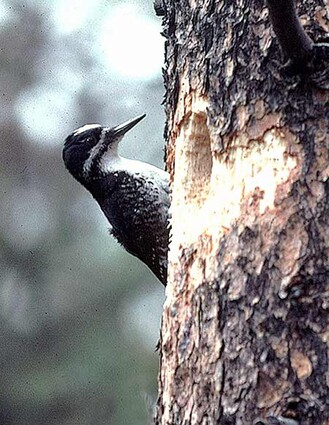A human problem
Last updated 9/2/2020 at Noon
We don’t have a wildfire problem. We have a human-made structure problem. The war on fire is the longest continuous war in the United States. After the devastating fires of 1910 that claimed many lives and many millions of acres, the Forest Service fought any suggestion that fire may be beneficial to our forest; they went so far as to adopt adorable fire-ravaged mascots like Bambi and Smokey Bear to place the guilt on society for something which happens naturally.
After 1910, the Forest Service’s fire exclusion policy became the law of the land based on the premise that fire was unnecessary and destructive.
But the Indigenous peoples of the Western United States had an intimate knowledge of fire regimes (the local patterns of forest fire frequency and intensity) and knew that fire was necessary in order for the serotinous cones of lodgepole pine (Pinus contorta var.
latifolia) to open up and drop their seeds on charred, fertile ground.
As the West became overrun with settlements, agriculturalists, and miners, forest fires became increasingly viewed as a threat to Manifest Destiny.
Naive settlers fell in love with the lush forests of the West and decided to set up shop without preparing for the inevitability of fire.
Then, with increasing exploitation of forests in the Progressive Era, the United States launched itself into a crusade against fire to protect the logging industry.
When we start a dialog about forest fires, we need to remind ourselves that there was nothing tragic or destructive about them until we, as settlers, arrived and assigned them this value. I don’t mean to say that fire is a neutral player in the ecology of our environment. It would be far more accurate to say that fire is an incomparable force of good sweeping through our forests.
Woodpeckers (family: Picidae) are wildland fire specialists. After the fires have passed, they gleefully make their homes in the charred snags that were once ponderosas (Pinus ponderosa) and feast on the bugs that have come out to devour the swarm of bugs munching away on downed logs and sapling sprigs shooting up through the soil. The olive-sided flycatcher (Contopus cooperi), mountain bluebird (Sialia currucoides), chipping sparrow (Spizella passerina), and mountain quail (Oreortyx pictus), too, achieve their highest abundance in the decades that follow a freshly burned snag forest.
The media doesn’t work in the interest of small forest-dwelling creatures. The Eagle Creek Fire that burned 50,000 acres in 2017 was a dream come true for fire-suppressionist members of the media who dramatically painted an image of Oregon that was forever marred by the foolishness of a minor and his fireworks.
However, ecologists have noted that the whole scenic area of the Columbia River Gorge was long overdue for a stand-replacing burn, as dictated by its historical fire regime, and the only tragedy is that the foolishness of man had prevented it from doing so for so long, because fire would threaten to burn human-centric cultural sites like Multnomah Falls Lodge. The result of that suppression was a fire that burned much larger and hotter than it might have, had we not interfered.
As Westerners, we love our forests; approximately three million of us reside in or adjacent to forests. Our forests are active, breathing, moving, changing beings flush with life that are reliant on fire in the same way they are reliant on water, topography, and wildlife. When we consider the best way to care for them, our plan of action should include adopting a new wildfire mascot, the woodpecker, whose more ecologically responsible slogan might read, “Only you can create healthy forests by opening up conversations about the importance of fire.”

















Reader Comments(0)